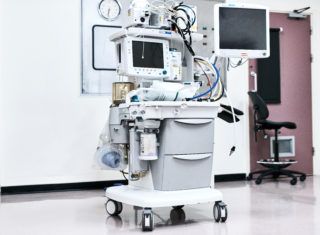The Rise of Driverless Cars
 Automotive industry experts claim that we will be sharing the road with totally autonomous cars within the next five years. The benefits of driverless cars are obvious. People on average spend about two hours per day in a car commuting to and from work. With ever-increasing demands on our time, allowing us to use that commute to be productive instead of focusing on the operation of the vehicle presents a huge advantage. More importantly, automation is expected to increase safety on the highways by eliminating the human error component from accidents. It’s no wonder that numerous automakers and start-up companies are developing driverless cars or aftermarket automation systems. However, the prospect of this huge step forward for the automotive industry does not come without concerns, especially with regard to product liability.
Automotive industry experts claim that we will be sharing the road with totally autonomous cars within the next five years. The benefits of driverless cars are obvious. People on average spend about two hours per day in a car commuting to and from work. With ever-increasing demands on our time, allowing us to use that commute to be productive instead of focusing on the operation of the vehicle presents a huge advantage. More importantly, automation is expected to increase safety on the highways by eliminating the human error component from accidents. It’s no wonder that numerous automakers and start-up companies are developing driverless cars or aftermarket automation systems. However, the prospect of this huge step forward for the automotive industry does not come without concerns, especially with regard to product liability.
Failure Redefined
While autonomous vehicles will increase the safety of travel by reducing collisions, they will create new modes of failure that will be attributed to the vehicle. These failures will shift the responsibility for avoiding accidents from the driver to the vehicle manufacturer. If a driverless vehicle malfunctioned and caused an accident, the list of potentially responsible parties could include the vehicle manufacturer, the manufacturer of a component used in the driverless system, the software engineer who programmed the code for the driverless operation of the vehicle, or the road designer in the case of an intelligent road system that helped control the vehicle. However, the various component parts and their respective roles in causing the malfunction may be hard to discern for the purpose of assigning liability. Unless the component part or software engineer produced a product that was clearly defective, the manufacturer of the driverless car will be the party most likely to be fingered for liability. Manufacturers of driverless vehicles are likely to argue that their “fault” should be evaluated in a comparative context, with credit given to the net safety benefits of the driverless vehicles. The history of such arguments made by manufacturers of other products suggests that this comparative or “net risk” assessment is unlikely to succeed.
On the other hand, manufacturers of traditional non-autonomous vehicles should be protected from liability for defects introduced on the aftermarket by a third party who converts a non-autonomous vehicle into an autonomous vehicle. Such liability concerns have already figured prominently in state legislative initiatives related to autonomous vehicles. The District of Columbia, Florida and Michigan have enacted autonomous vehicle statutes that provide this protection, although the statutes in California and Nevada do not.
Duty to Warn, Upgrades and Remedial Actions
As manufacturers introduce driverless cars to the market, new vehicle communications technology may increase the manufacturers’ duty to warn. These cars will be wirelessly connected to the Internet to permit software and other updates to the car’s operating systems. Manufacturers that become aware of newly discovered post-sale risks will be able to instantaneously transmit warnings to any category or subcategory of their cars. However, this will increase the manufacturers’ duty to warn consumers of any risks of which they become aware, because it will be more reasonable (and less expensive) for the manufacturers to do so. Simultaneously, the enormous amounts of data about the car’s operation and its environment, which will be made available to the manufacturer, may increase the ability of the manufacturer to identify systemic problems, which will likely increase the manufacturer’s liability to the consumer.
Manufacturers that become aware of potential software problems will need to act quickly to provide upgrades as soon as possible, but at the same time will need to ensure that they appropriately test the upgraded software before releasing it. Properly finding that balance will be a challenge. Manufacturers will also have to determine the best method for administering these upgrades. Configuring vehicles to accept automatic upgrades would be more efficient, but could also be viewed as problematic by owners who want to specifically approve any changes to their vehicle’s software.
Cybersecurity
Once driverless cars hit the road, they will be an appealing target for hackers. For these cars to be able to self-drive, they have to be able to negotiate with each other and the roadway. To accomplish this, driverless cars will have multiple avenues of communication with each other and the outside world, and less oversight from a driver to correct any errors. The constant machine-to-machine communications present a limitless number of underlying security risks the manufacturers will have to address. Further, the constant software updates will need to be handled in a manner that minimizes any cybersecurity risks.
There is a lot of promise and opportunity associated with driverless cars, but there are also a lot of questions and concerns. If driverless cars are successfully deployed across America’s roadways, it will be a revolution not just for drivers in their battle against traffic but also for the automotive industry as a whole.
This blog post was published originally on January 25, 2016.


 By
By




